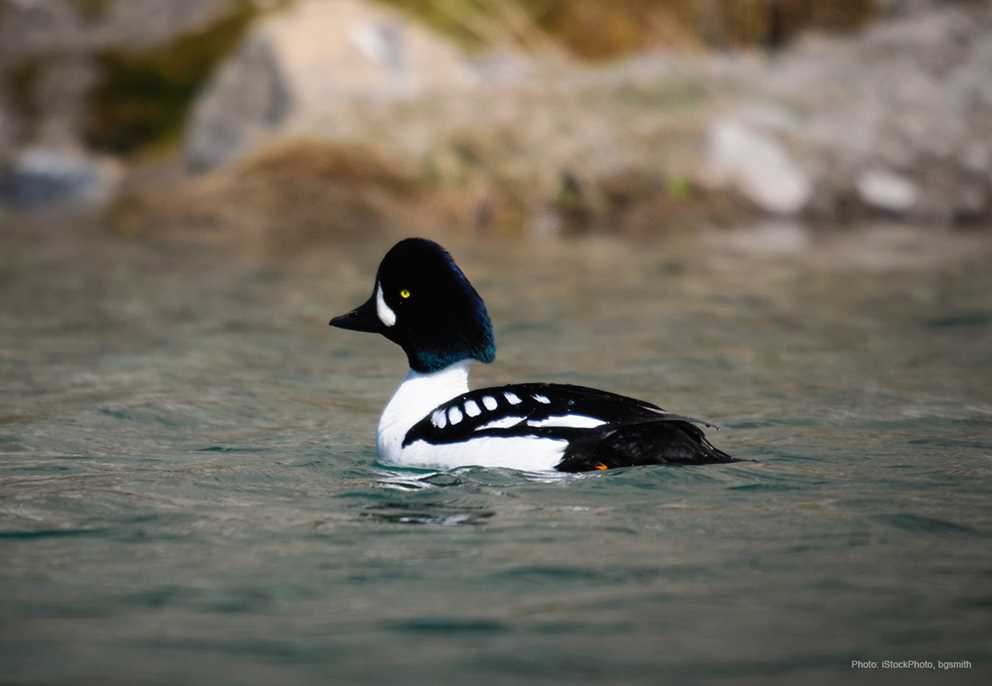Breeding
Barrow's goldeneyes breed in southeastern Alaska, northern Mackenzie and northwestern British Columbia, south to eastern Washington, southwestern Oregon, eastern California, the Colorado Rockies, Quebec, Labrador, Greenland and Iceland. Barrow's goldeneyes nest in wooded or open country, near a lake or pond surrounded by dense vegetation, usually in a natural tree cavity, abandoned woodpecker hole, nest box, rock cavity or stream bank. They often nest in the same area in successive years, and females lay an average of 6-9 eggs.
Latin: Buchephala islandica
Average length: M 19.2", F 17"
Average weight: M 2.13 lbs., F 1.31 lbs.
Description
In flight, a Barrow's goldeneye is difficult to distinguish from a common goldeneye. A puffy, oval-shaped head; steep forehead and stubby triangular bill help distinguish it from a resting common goldeneye. The male Barrow's goldeneye has a glossy purplish head with a crescent-shaped white patch between the eye and bill. The dark back contrasts with the white neck, breast and belly. The scapulars are black with a distinctive row of rectangular white spots. The white greater coverts are tipped with black, forming a black band between the white speculum and the white patch on the greater coverts. The bill is black and the legs and feet are yellowish. The female Barrow's goldeneye has a dark chocolate-brown head with a narrow whitish collar. The back and sides are dapple-gray and the chest, breast and belly are white. The bill is fleshy-yellow with a blackish basal area and nail. The legs and feet are yellowish.
Food Habits
Barrow's goldeneyes dive to feed on aquatic insects, crustaceans, small fish, fish eggs and pondweeds found in freshwater habitats, and mollusks (especially blue mussels) and marine worms found in marine habitats.
Population
Ninety percent of the Barrow's goldeneye population breeds and winters in North America from Alaska to the central United States staying west of the Rocky Mountains. The remaining Barrow's goldeneyes reside in pockets on the Atlantic coasts of Canada and the extreme north eastern coast of the United States.
Migration and Wintering
In winter, Barrow's goldeneyes are often observed in large flocks on lakes, rivers, estuaries and bays from southern Alaska south along the west coast of the United States to central California; locally from southern British Columbia and northern Montana to northern Nevada, Utah, and Colorado and from the Gulf of St. Lawrence south to New York.




